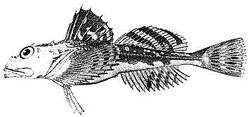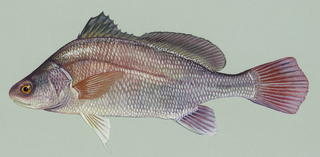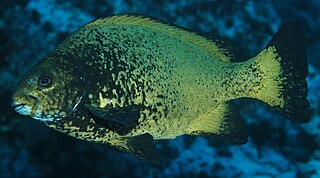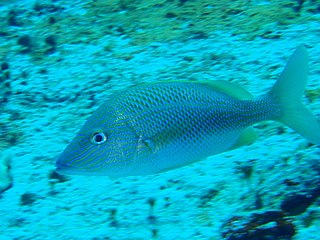| Pingalla | |
|---|---|
| Scientific classification | |
| Kingdom: | |
| Phylum: | |
| Class: | |
| Order: | |
| Family: | |
| Genus: | Pingalla Whitley, 1955 |
| Species | |
3, see text | |
Pingalla is a genus of freshwater fish in the family Terapontidae. These fish are native to northern Australia, but one species is also known from New Guinea.

Fish are gill-bearing aquatic craniate animals that lack limbs with digits. They form a sister group to the tunicates, together forming the olfactores. Included in this definition are the living hagfish, lampreys, and cartilaginous and bony fish as well as various extinct related groups. Tetrapods emerged within lobe-finned fishes, so cladistically they are fish as well. However, traditionally fish are rendered paraphyletic by excluding the tetrapods. Because in this manner the term "fish" is defined negatively as a paraphyletic group, it is not considered a formal taxonomic grouping in systematic biology, unless it is used in the cladistic sense, including tetrapods. The traditional term pisces is considered a typological, but not a phylogenetic classification.
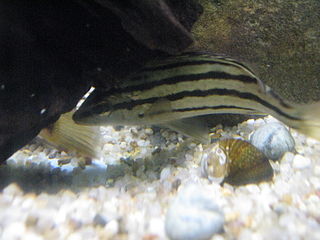
Grunters or tigerperches are fishes in the family Terapontidae. The majority of terapontids are exclusively freshwater species, found in streams of Australia and New Guinea. A minority of species are found in estuarine and shallow coastal waters in the Indian Ocean and western Pacific. They grow up to 80 cm in length and feed on fishes and invertebrates.

Australia, officially the Commonwealth of Australia, is a sovereign country comprising the mainland of the Australian continent, the island of Tasmania, and numerous smaller islands. It is the largest country in Oceania and the world's sixth-largest country by total area. The neighbouring countries are Papua New Guinea, Indonesia, and East Timor to the north; the Solomon Islands and Vanuatu to the north-east; and New Zealand to the south-east. The population of 26 million is highly urbanised and heavily concentrated on the eastern seaboard. Australia's capital is Canberra, and its largest city is Sydney. The country's other major metropolitan areas are Melbourne, Brisbane, Perth, and Adelaide.
Species include: [1]
- Pingalla gilberti (Whitley, 1955) - Gilbert's grunter
- Pingalla lorentzi (Weber, 1910) - Lorentz's grunter
- Pingalla midgleyi (Allen & Merrick, 1984) - black-blotch grunter
Gilbert's grunter is a species of fish in the family Terapontidae. It is endemic to Australia, where it is known from the Norman, Gilbert, and Flinders Rivers.
Pingalla midgleyi is a species of fish in the family Terapontidae known by the common names black-blotch grunter and Midgley's grunter. It is endemic to the Northern Territory of Australia, where it occurs in the Alligator, Katherine, and Daly River systems. It is a resident of Kakadu National Park.
